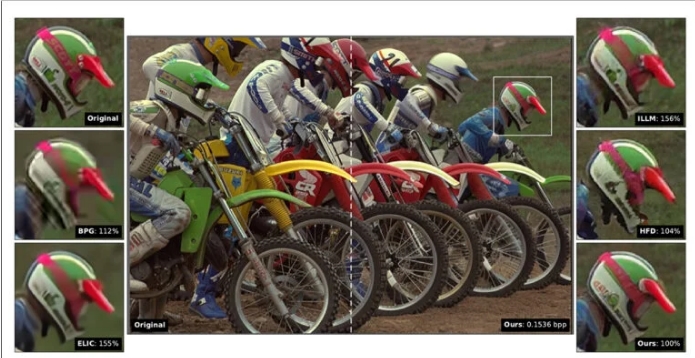Disney's research division has recently unveiled an innovative image compression technology that generates more realistic image effects while maintaining a low data transmission rate.
This new codec technology, although more complex than traditional codecs like JPEG and AV1, demonstrates significant advantages in image quality and processing efficiency. The research team found that combining quantization error with noise processing in image processing can better reconstruct image details at the target bit rate.

Comparison of Disney's compression method with previous methods. The authors claim improved detail recovery, offering a model that does not require hundreds of thousands of dollars in training and runs faster than the closest competing method.
Researchers state that the new technology requires less than 10% of the full processing workflow and does not necessitate significant changes to the system architecture. In practical tests, even when other compression methods use twice the bit rate, the image quality reconstructed by this technology is still more favored by end-users.
However, the technology also has some limitations. In certain cases, the reconstructed images may exhibit slight inaccuracies, such as slightly bent lines or slightly distorted small object boundaries. These issues primarily stem from the limitations of the system's feature dimensions.
In practical application tests, the research team evaluated multiple datasets, including Kodak, CLIC2022, and COCO30k. Evaluation metrics covered various dimensions such as peak signal-to-noise ratio (PSNR), learned perceptual image patch similarity (LPIPS), multi-scale structural similarity index (MS-SSIM), and Fréchet inception distance (FID).

Further comparison of Disney's new method (highlighted in green) with other methods.
User studies employed a forced choice method, evaluated through an Elo rating system similar to a chess championship. The results show that even when competitors use twice the data volume, Disney's new technology still received significantly higher user ratings.
In terms of processing speed, the new technology significantly outperforms its main competitors, reducing processing time from 6.87 seconds to 3.49 seconds. This efficiency improvement, coupled with excellent compression effects, makes the technology highly valuable in the fields of image storage and transmission.
It is worth noting that the development of image compression technology is crucial for addressing global issues such as data storage, streaming transmission, and energy consumption. Although the best technology solutions do not always gain the widest market acceptance, Disney's innovation provides an industry-wide solution that achieves a good balance between efficiency and performance.
